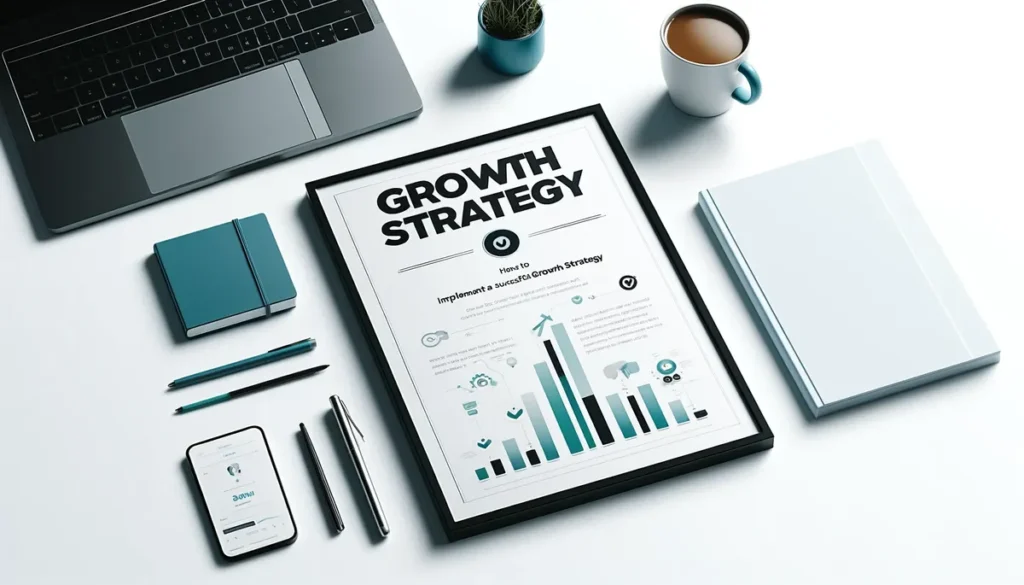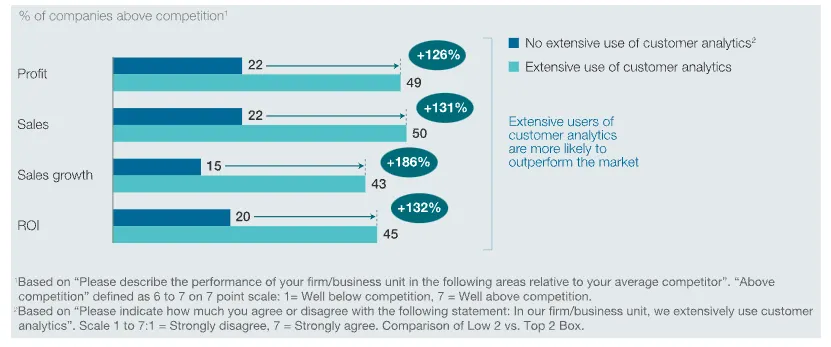
Success in the SaaS industry requires more than just a great product. Without a solid growth strategy, your SaaS business can quickly fall behind. Competition is fierce, and market demands are constantly evolving. Ignoring the need for a structured approach can lead to missed opportunities and stagnant growth.
This lack of a clear strategy often leaves SaaS companies struggling to attract and retain customers. Marketing efforts become scattered, customer churn increases, and revenue growth stalls. It’s a frustrating cycle that can seem impossible to break. The uncertainty can lead to wasted resources and a demotivated team.
But there is a solution. Implementing a successful SaaS growth strategy can transform your business. By following a clear, actionable plan, you can achieve sustainable growth. This article will guide you through ten essential steps to develop and execute a winning strategy.
Core Components of a SaaS Growth Strategy
A successful SaaS growth strategy starts with understanding its core components. Each element plays a vital role in driving sustainable growth and ensuring your business remains competitive. These components form the foundation of your strategy and guide your efforts in a cohesive direction.
1. Identifying Growth Strategies for SaaS Success
- Customer Acquisition: This strategy focuses on attracting new customers through various channels such as content marketing, social media, PPC, and SEO. According to HubSpot, companies that prioritize customer acquisition are 60% more effective in achieving their growth goals.
- Customer Retention: Retaining existing customers is often more cost-effective than acquiring new ones. Research from Bain & Company shows that a 5% increase in customer retention can lead to a profit increase of 25% to 95%.
- Upselling and Cross-Selling: These strategies involve offering additional products or services to existing customers. Upselling and cross-selling can significantly increase revenue per customer. Salesforce reports that upsell transactions are 15-20% more profitable than initial sales.
- Product-Led Growth: This approach relies on the product itself as the primary driver of customer acquisition, conversion, and expansion. Companies like Slack and Dropbox have successfully leveraged product-led growth to scale rapidly.
2. Aligning Strategies with Business Goals
- Holistic Integration: Integrate your growth strategies into your overall business plan to ensure alignment across all departments. This holistic approach fosters collaboration and streamlines efforts, making it easier to track progress and adjust tactics as needed.
- Data-Driven Decision Making: Utilize data and analytics to inform your growth strategies. According to McKinsey, data-driven organizations are 23 times more likely to acquire customers, six times as likely to retain customers, and 19 times more likely to be profitable.
3. Continuous Optimization
- Feedback Loops: Establish feedback loops to continuously gather and analyze customer feedback. This process helps you identify areas for improvement and adapt your strategies accordingly.
- Regular Reviews: Conduct regular reviews of your growth strategies to ensure they remain effective and aligned with market trends. Harvard Business Review emphasizes the importance of agility in business strategy, stating that agile organizations are more likely to outperform their peers.
4. Measuring Success
- Key Performance Indicators (KPIs): Identify and track key KPIs such as Customer Acquisition Cost (CAC), Customer Lifetime Value (CLTV), Monthly Recurring Revenue (MRR), and Churn Rate. These metrics provide insights into the effectiveness of your growth strategies and highlight areas for improvement.
- Benchmarking: Compare your performance against industry benchmarks to gauge your progress. For example, SaaS companies typically aim for a CLTV to CAC ratio of 3:1.
Incorporating these core components into your SaaS growth strategy ensures a comprehensive and effective approach. With a clear understanding of different growth strategies, alignment with business goals, continuous optimization, and robust measurement, your business is well-equipped to achieve sustainable growth and maintain a competitive edge in the market.
10 Steps to Implement a Successful SaaS Growth Strategy
Implementing a successful SaaS growth strategy involves a series of well-defined steps. Here are ten essential steps to guide you:
1. Conduct Market Research and Analysis
Understanding your market is the first step toward growth. Use tools like surveys, industry reports, and competitor analysis to gather data. This information will help you identify trends, opportunities, and potential threats. For example, the global SaaS market is expected to grow at a CAGR of 21.2% from 2022 to 2030.
- Identify Market Trends: Keep track of emerging trends and technologies in the SaaS industry. This proactive approach helps you stay ahead of competitors and adapt to changes swiftly.
- Competitive Analysis: Analyze your competitors to understand their strengths, weaknesses, and strategies. Tools like SEMrush and Ahrefs can provide insights into their traffic sources, keyword strategies, and backlink profiles.
- Customer Feedback: Conduct surveys and focus groups to gather direct feedback from potential customers. This qualitative data can uncover unmet needs and preferences that can guide your product development and marketing strategies.
- Use Case Studies: Study successful SaaS companies to learn from their market research methodologies and growth strategies.
2. Pinpoint Your Ideal Customers
Knowing your ideal customer is crucial. Segment your market based on demographics, behavior, and needs. Create detailed customer personas to guide your marketing and product development efforts.
- Segment Your Audience: Divide your audience into specific segments based on factors such as industry, company size, job role, and geographic location. This helps tailor your messaging and marketing efforts more effectively.
- Develop Customer Personas: Create detailed personas that represent your ideal customers. Include information such as demographics, pain points, goals, and preferred communication channels. Tools like HubSpot Persona can assist in building these personas.
- Behavioral Analysis: Use analytics tools to track user behavior on your website and within your product. Understanding how users interact with your product can provide insights into their needs and preferences.
- Engage with Your Audience: Use social media and community forums to engage with your audience. Platforms like LinkedIn and Reddit can provide valuable insights into customer pain points and interests.
3. Develop a Compelling Value Proposition
Your value proposition should clearly communicate the benefits of your product. It needs to address the pain points of your target audience and highlight how your solution is unique. Strong value propositions can significantly boost customer acquisition and retention rates.
- Address Pain Points: Clearly outline the problems your product solves. This helps potential customers understand the immediate value your product offers.
- Highlight Benefits: Focus on the benefits and outcomes users can expect from using your product. This could include time savings, cost reductions, or increased productivity.
- Showcase Differentiators: Identify what sets your product apart from competitors. This could be unique features, superior customer support, or a more user-friendly interface.
- Use Clear and Concise Messaging: Ensure your value proposition is easy to understand and free of jargon. It should be concise enough to be communicated in a single sentence or short paragraph.
- Test and Refine: Use A/B testing to experiment with different value propositions. Gather feedback and optimize your messaging based on what resonates most with your audience.
4. Establish Customer Acquisition Strategies
Acquiring new customers is essential for growth. Develop a multi-channel acquisition plan that leverages various strategies. Businesses that use marketing automation to nurture prospects experience a 451% increase in qualified leads.
- Content Marketing: Create high-quality content that addresses the needs and pain points of your target audience. Blog posts, whitepapers, webinars, and case studies can attract and educate potential customers.
- SEO and SEM: Optimize your website for search engines to improve organic traffic. Use tools like Google Ads and Bing Ads for paid search marketing to reach a broader audience.
- Social Media Marketing: Leverage platforms like LinkedIn, Twitter, and Facebook to promote your content and engage with your audience. Social media is an effective channel for building brand awareness and driving traffic to your website.
- Email Marketing: Build an email list and use targeted campaigns to nurture leads and convert them into customers. Tools like Mailchimp and ActiveCampaign can help automate and optimize your email marketing efforts.
- Referral Programs: Encourage existing customers to refer new ones by offering incentives such as discounts or free features. Word-of-mouth marketing is powerful and can significantly boost your acquisition efforts.
5. Implement Customer Retention Strategies
Retaining customers is as important as acquiring new ones. Focus on delivering exceptional customer service, providing regular updates, and creating loyalty programs.
- Onboarding Programs: Implement a comprehensive onboarding program to help new customers get started with your product. A smooth onboarding process can reduce churn and improve customer satisfaction.
- Regular Communication: Keep customers engaged with regular updates, newsletters, and personalized messages. Inform them about new features, upcoming events, and relevant industry news.
- Loyalty Programs: Create loyalty programs that reward customers for their continued business. Offer discounts, exclusive access to new features, or other incentives to keep them engaged.
- Customer Support: Provide exceptional customer support through various channels such as live chat, email, and phone. Tools like Zendesk and Intercom can help manage and streamline customer support efforts.
- Feedback Mechanisms: Regularly collect and act on customer feedback to improve your product and services. Use surveys, NPS scores, and direct interactions to gather valuable insights.
6. Create an Effective Pricing Strategy
Your pricing model should reflect the value you provide and be competitive in the market. Experiment with different pricing strategies, such as tiered pricing, freemium models, or usage-based pricing. Regularly review and adjust pricing based on market conditions and customer feedback.
- Understand Your Costs: Calculate your costs, including development, support, marketing, and overhead, to ensure your pricing covers expenses and generates profit.
- Value-Based Pricing: Set prices based on the perceived value of your product to the customer rather than just costs. This approach can maximize revenue and align pricing with customer benefits.
- Tiered Pricing: Offer multiple pricing tiers with different levels of features and support. This allows customers to choose a plan that fits their needs and budget while providing opportunities for upselling.
- Freemium Model: Provide a basic version of your product for free while charging for premium features. This strategy can attract a large user base and convert free users into paying customers over time.
- Usage-Based Pricing: Charge customers based on their usage of your product, such as the number of users, data usage, or transactions. This model can be attractive for customers with variable usage patterns.
7. Optimize Your Product
Continuous product improvement is vital for long-term growth. Collect feedback from users and use it to make data-driven enhancements. Eighty percent of companies that deliver excellent customer experiences use customer feedback to improve their products.
- User Feedback: Regularly collect feedback through surveys, user interviews, and feedback forms. Use this data to identify areas for improvement and new feature requests.
- Product Analytics: Use analytics tools like Mixpanel and Amplitude to track how users interact with your product. Analyze this data to understand user behavior, identify pain points, and prioritize enhancements.
- Beta Testing: Conduct beta tests for new features and updates before a full rollout. This allows you to gather feedback and make necessary adjustments to ensure a smooth release.
- Continuous Deployment: Implement a continuous deployment process to release updates and improvements frequently. This keeps your product current and responsive to user needs.
- User Experience (UX) Design: Invest in UX design to ensure your product is intuitive and easy to use. A positive user experience can significantly reduce churn and increase customer satisfaction.
8. Track Metrics and KPIs
Identify key metrics and KPIs that align with your growth goals. Regularly monitor these metrics to assess your strategy’s effectiveness and make necessary adjustments.
- Customer Acquisition Cost (CAC): Calculate the cost of acquiring a new customer. This includes marketing and sales expenses divided by the number of new customers acquired.
- Customer Lifetime Value (CLTV): Measure the total revenue expected from a customer over their relationship with your company. A higher CLTV indicates better customer retention and upselling.
- Churn Rate: Track the percentage of customers who cancel their subscriptions over a given period. Reducing churn is crucial for sustainable growth.
- Monthly Recurring Revenue (MRR): Monitor the total monthly revenue from subscription-based services. This metric provides insight into your business’s financial health and growth trajectory.
- Net Promoter Score (NPS): Use NPS surveys to gauge customer satisfaction and loyalty. A high NPS indicates a strong likelihood of customers recommending your product to others.
9. Leverage Tools and Resources
Utilize various tools to support your growth strategy. Analytics tools, CRM software, and marketing automation platforms can streamline your efforts and enhance efficiency.

Customer Analytics (Source)
- Analytics Tools: Google Analytics, Mixpanel, and Amplitude help you track and analyze user behavior. These insights are crucial for making informed decisions and optimizing your strategy.
- CRM Software: Salesforce, HubSpot, and Zoho CRM assist in managing customer relationships and improving retention. CRM software can increase sales by up to 29%, productivity by 34%, and forecast accuracy by 42% (source).
- Marketing Automation: Platforms like Mailchimp, Marketo, and ActiveCampaign automate marketing tasks and optimize campaigns. Companies that use marketing automation see a 451% increase in qualified leads (source).
- Project Management: Tools like Asana, Trello, and Jira streamline project management and collaboration, helping teams stay organized and on track.
- Customer Feedback: Tools like SurveyMonkey, Typeform, and UserVoice collect valuable customer feedback, enabling you to continuously improve your product and customer experience.
Following these ten steps, you can develop and execute a robust SaaS growth strategy that drives sustainable growth and positions your business for long-term success.
Implementation Tips and Best Practices for Your SaaS Growth Strategy
Implementing a SaaS growth strategy requires careful planning and execution. Here are some actionable tips to help you succeed:
- Stay Customer-Centric: Always keep your customers at the heart of your strategy. Understand their needs and preferences, and tailor your approach accordingly. For example, companies that focus on customer experience report 60% higher profits than their competitors (source).
- Be Data-Driven: Use data to inform your decisions. Regularly analyze performance metrics and customer feedback to guide your strategy. According to McKinsey, data-driven organizations are 23 times more likely to acquire customers, six times as likely to retain customers, and 19 times more likely to be profitable (source).
- Foster Collaboration: Ensure all departments are aligned with your growth strategy. Foster collaboration across teams to achieve cohesive and effective implementation. Collaborative efforts can improve productivity by up to 25% (source).
- Stay Flexible: The SaaS industry is dynamic. Be prepared to adapt your strategy based on market trends and performance data. Agile companies are more likely to outperform their peers and respond effectively to market changes (source).
- Learn from Others: Study successful SaaS companies and learn from their growth strategies. Apply best practices and avoid common pitfalls. For instance, examining case studies of companies like Slack and Dropbox can provide valuable insights into effective growth strategies (source).
Conclusion
Implementing a successful SaaS growth strategy involves a multifaceted process that demands careful planning and execution. The ten steps outlined in this guide provide a solid foundation for driving sustainable growth. Focusing on customer acquisition, retention, and continuous optimization helps ensure your business remains competitive and thrives in the dynamic SaaS market.
Staying customer-centric and data-driven, while fostering collaboration and flexibility, are essential for success. Utilize the right tools and resources to streamline your efforts and enhance efficiency. Regularly reviewing and iterating your strategy based on performance data and feedback will maintain its effectiveness over time.
Ready to elevate your SaaS business? We can help you achieve your growth goals. Contact us today!

